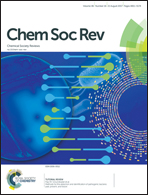Action spectra in semiconductor photocatalysis
Abstract
Action spectra are an increasingly important part of semiconductor photocatalyst research, and comprise a plot of photonic efficiency, η, versus excitation wavelength, λ. The features and theory behind an ideal photocatalytic system are discussed, and used to identify: (i) the key aspect of an ideal action spectrum, namely: it is a plot of η vs. λ which has the same shape as that of the fraction of radiation absorbed by the semiconductor photocatalyst, f, versus λ and (ii) the key requirement when running an action spectrum, namely, that the initial rate of the photocatalytic process is directly proportional to incident photon flux, ρ, at wavelengths where η > 0. The Pt/TiO2/MeOH system is highlighted as an example of a photosystem that yields an ideal action spectrum. Most photocatalytic systems exhibit non-ideal action spectra, mostly due to one or more of the following: light intensity effects, crystal phase effects, dye-sensitisation, dye photolysis, charge transfer complex, CTC, formation and localized surface plasmon radiation, LSPR, absorption by a deposited noble metal catalyst. Each of these effects is illustrated using examples taken from the literatures and discussed. A suggested typical protocol for recording the action spectrum and absorption/diffuse reflectance spectrum of a photocatalytic system is described. The dangers of using a dye to probe the activity of a photocatalysts are also discussed, and a possible way to avoid this, via reductive photocatalysis, is suggested.



 Please wait while we load your content...
Please wait while we load your content...